 |
Mars Månad, i Nådens
År 2010
|
|
"Men när detta begynner
ske, då må ni resa er upp och upplyfta era huvuden,
ty då nalkas er förlossning." (Luk. 21:28) |
Om en opublicerad arameisk kopia av Enoks Bok
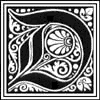 et finns troligen
en komplett arameisk, över 2000 år gammal, avskrift
av Enoks bok, både på mikrofilm, och, således,
också bevarad som skriftrulle, undangömd någonstans.
et finns troligen
en komplett arameisk, över 2000 år gammal, avskrift
av Enoks bok, både på mikrofilm, och, således,
också bevarad som skriftrulle, undangömd någonstans.
Här är vad jag har hittat på nätet om
detta.
Berättelsen börjar 1990, under Kuwaitkrisen, då
oron för ett storkrig i mellanöstern gjorde att personer
som satt på värdefulla antikviteter ville sälja
dessa.
"The Enoch microfilm"
Från en intervju 1994 i Biblical Archeology Review, med
John Strugnell, en av DSS-chefredaktörerna. (DSS = Dead Sea
Scrolls.) Intervjun handlar om händelser som skall ha skett
1990.
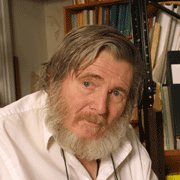
"John Strugnell's
important work on the Dead Sea Scrolls started in 1954 when he
was a graduate student at Oxford, and continued throughout his
lifetime. He came to Harvard Divinity School as a visiting professor
in 1966. In 1968, he was named Professor of Christian Origins,
the title he held until his retirement in 1996. He died on November
30, 2007, at the age of 77."
Hershel Shanks: There’s this strange story that’s
been in the papers, that at one point two prostitutes, one Jewish
and one Arab, came to you at the École Biblique [the French
School in Jerusalem] and, I believe, took you to a field outside
of Bethlehem where they removed from their private parts microfilms
of Dead Sea Scrolls, one of them being the complete book of Enoch.
Is that true?
John Strugnell: [laughs] Well, there are a lot of mixed elements,
bits of which are true, but bits of which are false.
HS: Could you tell us the story?
JS: There was a whore. [Removing colorful accretions, there were
women messengers of uncertain profession who showed me a microfilm
- not at the École Biblique nor even in Jerusalem.] Now
the incident in the field outside Bethlehem belongs to a completely
different story.
[...]
JS: ... And then I, myself, saw one - the Enoch microfilm; but
I must save that story for my memoirs.
HS: This is the story about the prostitute.
JS: Yes. So I wouldn’t be surprised if there were five other
manuscripts from Cave 11 sometime to be found in the near future.
I wouldn’t be overwhelmed if there were seven or eight. If
none ever came to light, I would wonder who on earth had been
having these hallucinations, or why they are being held back.
HS: Are you currently working on trying to purchase or acquire
these scrolls?
JS: Yes, we’ve got people interested in it. But after the
big upheaval in Kuwait, things settled down, and the urgency of
trying to get rid of this material evaporated.
HS: You tried to acquire it during the Kuwait crisis?
JS: That was when it was shown to me.
HS: And how did you communicate with the owner? Did you meet him?
JS: Yes.
[...]
HS: You’re still working on it?
JS: Oh, yes. And there are two or three serious projected buyers.
But as I said, to me the most important thing is not just that
there are projected buyers of that one manuscript, but the fact
that it’s highly likely that there should be three or four
others. -
"A complete copy of Enoch in Aramaic has already been
found"
Från ett kristet forum på nätet kommer ett
utdrag ur en bok, utgiven 1992, som berättar mer om bakgrunden
till det hela.
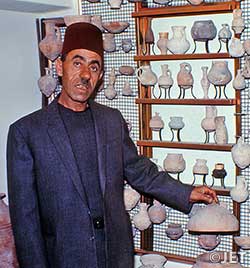
Antikhandlaren "Kando"
"Avi Katzman, in Understanding the Dead Sea Scrolls,
on p. 262, reports a complete copy of Enoch in Aramaic has already
been found.
"Regarding the scrolls, [John] Strugnell claims at least
four other scrolls have been found that have not yet come to light:
'I've seen, with my own eyes, two.' One of the two is a complete
copy of the book of Enoch.
According to Strugnell, Israeli archaeologist Yigael Yadin
is the reason these scrolls have still not come into scholarly
hands. After the Six-Day War, Yadin confiscated the famous Temple
Scroll from a Bethlehem antiquities dealer known as Kando. Yadin
paid Kando $250,000, according to Strugnell (according to Yadin,
the sum was $105,000), to encourage anyone else with scroll materials
to come forward. But this was not enough, says Strugnell: 'Yadin
gave Kando two hundred fifty thousand dollars where we'd offered
Kando one million five weeks earlier. When the owners of the manuscripts
heard that, they just crossed the Jordan River.'
These scrolls, like the Temple Scroll, came from Cave 11 at
Qumran, according to Strugnell. The manuscripts are now 'somewhere
in Jordan. Various people own them. Several of them have been
sold to big bankers. They're investments for these people. There's
no point in forcing a sale. If they really need cash — as
one seems to now — I have the money.'
"As for the other two scrolls — the ones Strugnell
has not seen — '[Lankester] Harding [the director of Jordan's
Department of Antiquities] on his death bed told me he'd seen
three, only one of which I've seen — so that makes four.'
"Strugnell is not concerned that the scrolls may deteriorate
before scholars can look at them: 'They're all being kept very
carefully; no one need worry about them. They're a better investment
than anything on the Israeli or the New York stock exchanges,'
he added."
In this light consider the following from Michael Wise, in
A New Translation - The Dead Sead Scrolls, p. 279:
'No trace of the Parables of Enoch has been discovered at
Qumran, and it is widely considered today to be a composition
of the later first century C.E. If a pre-Christian copy of the
Parables were ever discovered, it would create a sensation, since
it is the only text besides the Christian Gospels that uses the
title 'Son of Man' for the heavenly Savior of Israel."
"The Angel Scroll"

Är "Änglarullen" en av de försvunna bokrullarna?
Efter det var det tydligen tyst i några år om saken,
och så 1999 kommer det nya uppgifter, och rykten, om en
skriftrulle som "liknar" innehållet i Enoks bok.
Här handlar det uppenbarligen om en annan skrift än
Enoks bok, men dock väldigt närbesläktad, i samma
tradition, och därför mycket troligt ur samma samling,
och möjligen, ägare, som den gömda arameiska enoksrullen.
"Statement by Stephen J Pfann on "the Angel"
Scroll in the Jerusalem Report, 27 Sept 1999."
"Four months ago I was approached by a senior writer
from the Jerusalem Report, Netty Gross, and was asked if I would
help verify the existence of a Dead Sea Scroll manuscript which
had not been published previously.
I was aware of a story, known by other scholars, that there
was at least one rather well-preserved scroll which had made its
way to Europe and which was similar to the Book of Enoch or Jubilees.
This may be identified as the source of a scroll fragment examined
by Prof. John Strugnell sometime in 1967-1968 which he described
elsewhere as something "resembling the Book of Enoch".
The scroll discovery at hand was already known at least as
early as 1974 and may have actually been discovered in the mid-to-late
1960's. If its authenticity could be verified, its similarity
in content to writings of the Enochic tradition would posit this
as being either similar to or identical to the elusive scroll
of Europe."
DEN NÄMNDA änglarullen är alltså inte
densamma som Strugnell såg på mikrofilm, eftersom
det var en fullständig kopia av Enoks bok, och, som det väl
framgår av texterna ovan, tiden då han såg den
var under Kuwaitkrisen, dvs ~1990-91. Änglarullens innehåll
beskrivs närmare på sidan länken pekar på.
Av värde här kan vara uppgiften om att en annan skriftrulle
skall ha sålts till någon i Europa (bankirerna nämnda
av Strugnell?). Det framgår inte helt klart om det är
enoksrullen, den som Strugnell sade fanns i Jordanien, eller någon
av de andra nämnda, icke namngivna rullarna.
Tyvärr dog Strugnell 2007, och några memoarer har
inte kommit ut, så det kommer antagligen ingen mer information
därifrån, såvida inte det finns kvarlämnat
material som kommer att ges ut postumt. Något mer om Änglarullen
har heller inte framkommit.
___
"Regarding the new Enoch papyrus fragment"
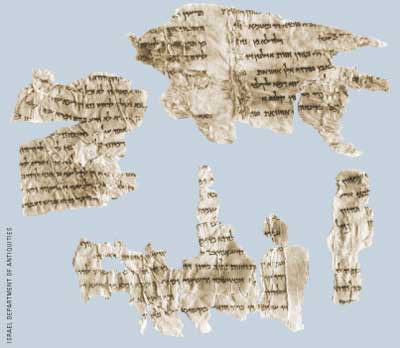
Ett enoksfragment.
Ytterligare några år går, och 2004 händer
det något igen. Ett papyrusfragment av Enoks bok har hittats,
vilket är ovanligt eftersom de flesta tidigare funna DSS-fragmenten
var gjorda av pergament. Det innebär alltså att Enoks
bok utgavs på både papyrus och pergament. Det innebär
också att antalet av de skilda utgåvor av Enoks bok
som fanns bland DSS ökar. Vilket ju visar dess betydelse
(och spridning).
Följande kommer från bloggen PaleoJudaica i oktober
2004, och börjar med ett citat av en uppräkning av alla
kända omnämnanden av den eftersökta enoksrullen:
- "P. Ross in Scientific American, vol. 263 no 5 (Nov.
1990) refers to "a nearly complete scroll", but doesn't
state if it is of Enoch or another book.
- A. Katzman in Biblical Archeology Review, vol. XVII no.
1 (Jan.-Feb. 1991), p.64,70 mentions a "complete copy of
the Book of Enoch".
- H. Shanks interviewing Strugnell in Biblical Archaeology
Review, vol. 20 no. 4 (July-Aug. 1994), p. 46-47 mentions "the
complete book of Enoch" on microfilm and in a rather mixed
up conversation also mentions Cave 11.
- N. Silberman in The Hidden Scrolls: Christianity, Judaism
& the War for the Dead Sea Scrolls (New York: Putnam and
Sons, 1994), p.162 mentions "a complete manuscript of the
book of Enoch".
- Pfann in a web article, The Visions of Yeshua Ben Padiah
Scroll, (1999) mentions a "rather well preserved scroll
... resembling the book of Enoch". It is not clear if this
is the same MS as the other Enoch MS which is mentioned by Shanks
as being seen by Strugnell on microfilm, rather than the actual
MS."
"If the above is representative of Strugnell's Enoch
scroll, it is unlikely to be the same as the papyrus fragment
of Enoch to be published by the Eshels, as Strugnell's Enoch is
complete or nearly compete. [However --- what if the photograph
provided to the Eshel's is just a sample, perhaps provided by
a seller/vendor to test the market or create anticipation so as
to inflate the market? This is of course, just my speculation.].
Prior to seeing the post in PaleoJudaica, I had not heard of this
papyrus fragment. It was new to me too.
As for the last reference, follow the link for Stephen Pfann's
website on the Ben Padiah (Angel) Scroll. Five years after the
partial transcript surfaced, this document - if it exists at all
- has not been published or, as far as I know, even shown to a
specialist. The mention of the rumor about an Enoch scroll is
near the beginning of the "Background" section of the
web page.
UPDATE (19 October): Seth Sanders reminds me that he e-mailed
the following a few days ago, referring to the same text:
'I assume you recall the excitement over the last "other
Qumran manuscript of Enoch", the so-called "Angel Scroll"
story of 1999. Like this putative Enoch fragment, it was not presented
to scholars to examine. Of course, in that case it was even more
dubious because there was not even a photograph. [...] We have
not heard anything further about this text. The problem, as you
know, is that you or I or any other linguistically trained scholar
of Second Temple Judaism could produce such a scroll, given enough
Chutzpah and the help of a competent manuscript forger. It could
certainly be proven to be genuine (and I hope it is!), but I think
the burden of proof is on those arguing for its authenticity.'
[...] As usual with these things, the authenticity question
really needs to be sorted out in the peer-review journals.
As for forging a scroll fragment like this, it would not be easy
to come up with something that would stand up to C-14 dating.
But perhaps it could be done."
I boken "The Hidden Scrolls" nämnd ovan finns följande
intressanta detalj:
"There are those that will swear to this day (John Strugnell
is one of them) that they were shown by bedouin a complete manuscript
of the Book of Enoch..."
Påståendet är ganska starkt, och gör
att det verkligen är troligt att det finns en bevarad arameisk
Enoksrulle. Flera olika personer skall ha fått se den, och
den ägs, eller har ägts, av jordanska beduiner.* Antingen
finns den fortfarande i deras eller deras släktingars ägo,
eller så har den alltså sålts till någon
bankir i Europa (en detalj som verkligen kan mana till spekulation,
då vi vet vilka sällskap rika bankirer ofta ingår
i).
* I en film om DSS framgår det att den beduin som hittade
de första rullarna, i grotta 1, är samma man som hittade
grotta 11, den grotta Strugnell säger att enoksboken kom
ifrån. Det är också den grottan som givit flera
av de bäst bevarade rullarna. Beduinen säger att han
och hans vänner sålde rullarna till flera olika personer,
bland dem Kando.
___
"More 1 Enoch from the Qumran Library!"
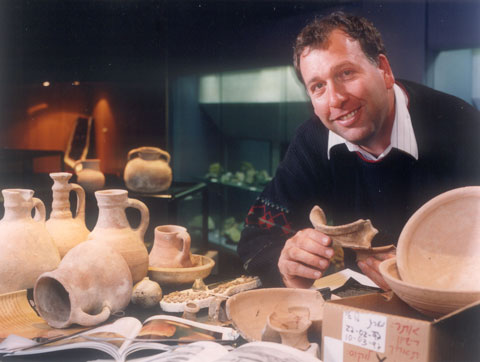
Hanan Eshel
I samma blogg följer nu mer info om det nya papyrusfragmentet:
"Gabriele Boccaccini e-mails:
A New Fragment of Enoch found at Qumran"
"In March 2004 Esther and Hanan Eshel received for publication
a photograph of a fragmentary papyrus preserving five lines identifiable
as the end of Enoch 8 and the beginning of Enoch 9 (8:4-9:3).
The new fragment can be dated approximately to the Hasmonean or
the early Herodian era (50-25 BCE) and was undoubtedly found at
Qumran. As we cannot identify the cave, we suggest this fragment
be labeled XQpapEnoch. Because the only Enochic book written on
papyrus is the Book of Giants from Cave 6, 6QpapGiant (=6Q8),
which is written in a different semi-cursive later hand, it appears
that this fragment is the first to be published from an additional
copy of Enoch.
The verses in question describe how the angels heard the cries
of the people killed as a result of Asa'el's teaching humans to
make weaponry. The publication of this new fragment of Enoch is
important not only as a witness to an additional manuscript of
Enoch found at Qumran, but also because of its contribution to
the reconstruction of two Cave 4 manuscripts (4QEna and 4QEnb).
Despite their poor preservation, it is possible to read and reconstruct
in the three witnesses to the Aramaic a similar, if not identical,
text.
This version differs from the Greek translation found at Gizeh,
which has scribal errors and various omissions. Even though Syncellus'
versions also contain corruptions, it appears that the Greek cited
by Syncellus is the closest to the Aramaic source.
The article which includes the new fragment was submitted
for publication in DSD [the journal Dead Sea Discoveries] in the
beginning of May 2004. On Oct 11, 2004, the fragment was discussed
at the University of Michigan by a panel composed by Profs. Gabriele
Boccaccini, James C. VanderKam, Esti Eshel and Hanan Eshel, and
will be presented again at Camaldoli during the Third Meeting
of the Enoch Seminar (6-10 June 2005)."
"Quoted with the permission of Boccaccini and the Eshels.
There have been rumors for many years of the existences of another
Qumran Aramaic manuscript of 1 Enoch. I wonder if this is it and
if there's any more of it out there somewhere."
"News on the new Enoch fragment"
"Monday, November 22, 2004
Yesterday evening after the Qumran session, Esther and Hanan
Eshel gave an impromptu presentation on the new 1 Enoch fragment,
whose story broke on PaleoJudaica some time ago. They are calling
it XQpapEnoch, since they are confident it comes from a Qumran
cave, but they don't know which one, and (unusually for a Qumran
scroll and uniquely for a Qumran Enoch manuscript) it's written
on papyrus rather than leather. It contains the damaged Aramaic
text of 1 Enoch 8:4-9:3, a passage that tells how the archangels
looked down from heaven on the corruption of the earth before
the Flood, and it allows us to correct one of Milik's reconstructions
since the word in question survives on this papyrus. The correct
reading or something very close to it was conjectured by Loren
Stuckenbruck (of Durham University) some time ago, before this
fragment was discovered. (Well done, Loren.)
The fragment belongs to the Kando family. (Kando was an antiquities
dealer who brokered the original Dead Sea Scrolls acquistions.)
The Enoch papyrus is one of 12 unpublished fragments owned by
them. The Eshels have seen infra-red photos of 6 of these. Five
are biblical fragments from three already known manuscripts: 4QIsac,
4QGenf, and 8QGen. The other six look like "black corn flakes"
and are now on tour in the USA in the From the Dead Sea Scrolls
to the Forbidden Book exhibition. The Eshels haven't seen the
fragment in person yet but they are confident enough of its authenticity
to publish it now. They passed around a photo of the text during
the lecture and Moshe Bernstein promptly challenged one of their
readings. Scholarship in action.
There are also rumors that another fragment of the same manuscript
exists."
EFTER DETTA tycks det inte ha sagts något mer om enoksrullen.
Det var alltså oroligheter i området som förmådde
den dåvande ägaren/upphittaren att söka köpare
1990. Finns rullen kvar i släktens ägo kan samma sak
möjligen ske igen, vid någon framtida händelse.
Är rullen såld till Europa, blir saken en helt annan.
Man kan tänka sig flera skäl till att någon i
Europa skulle vilja hindra denna skrift från att nå
allmänheten.
Här kunde man komma in på vem som är rullens
rätta ägare, och till vilka den är ämnad,
men det får jag lämna tills vidare. Den här informationen
måste sätta sig först.
_______
Läs mer om Enoks bok i
BIBLISK KOSMOLOGI
ENOKS BOK INTERLINEAR
Bara
Jesus
frälsar oss från
vredesdomen


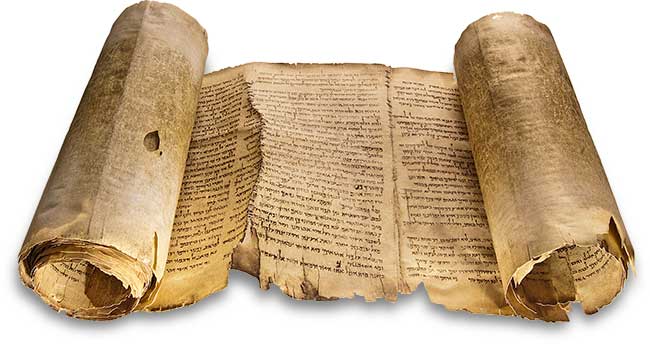
 et finns troligen
en komplett arameisk, över 2000 år gammal, avskrift
av Enoks bok, både på mikrofilm, och, således,
också bevarad som skriftrulle, undangömd någonstans.
et finns troligen
en komplett arameisk, över 2000 år gammal, avskrift
av Enoks bok, både på mikrofilm, och, således,
också bevarad som skriftrulle, undangömd någonstans.



